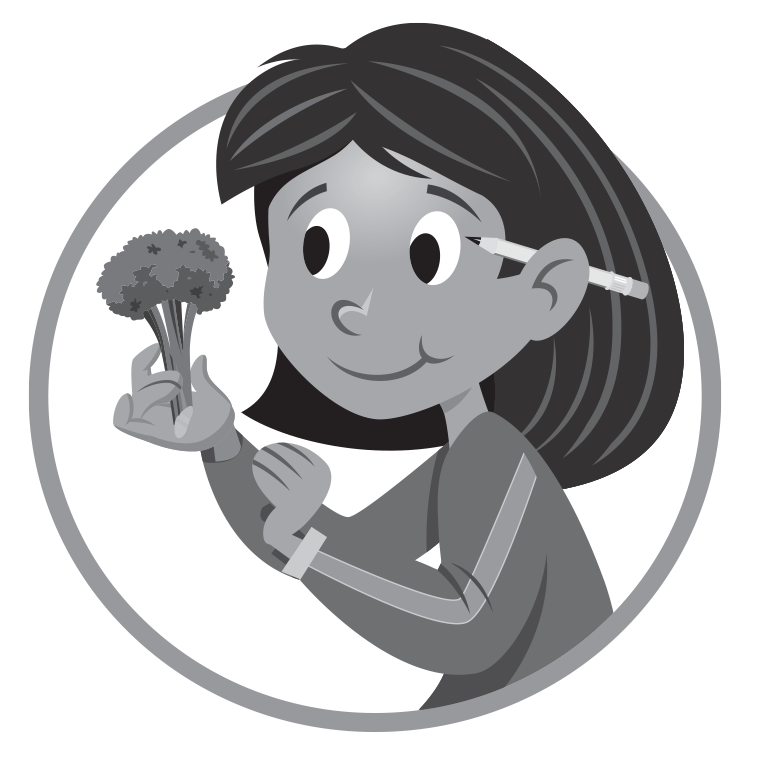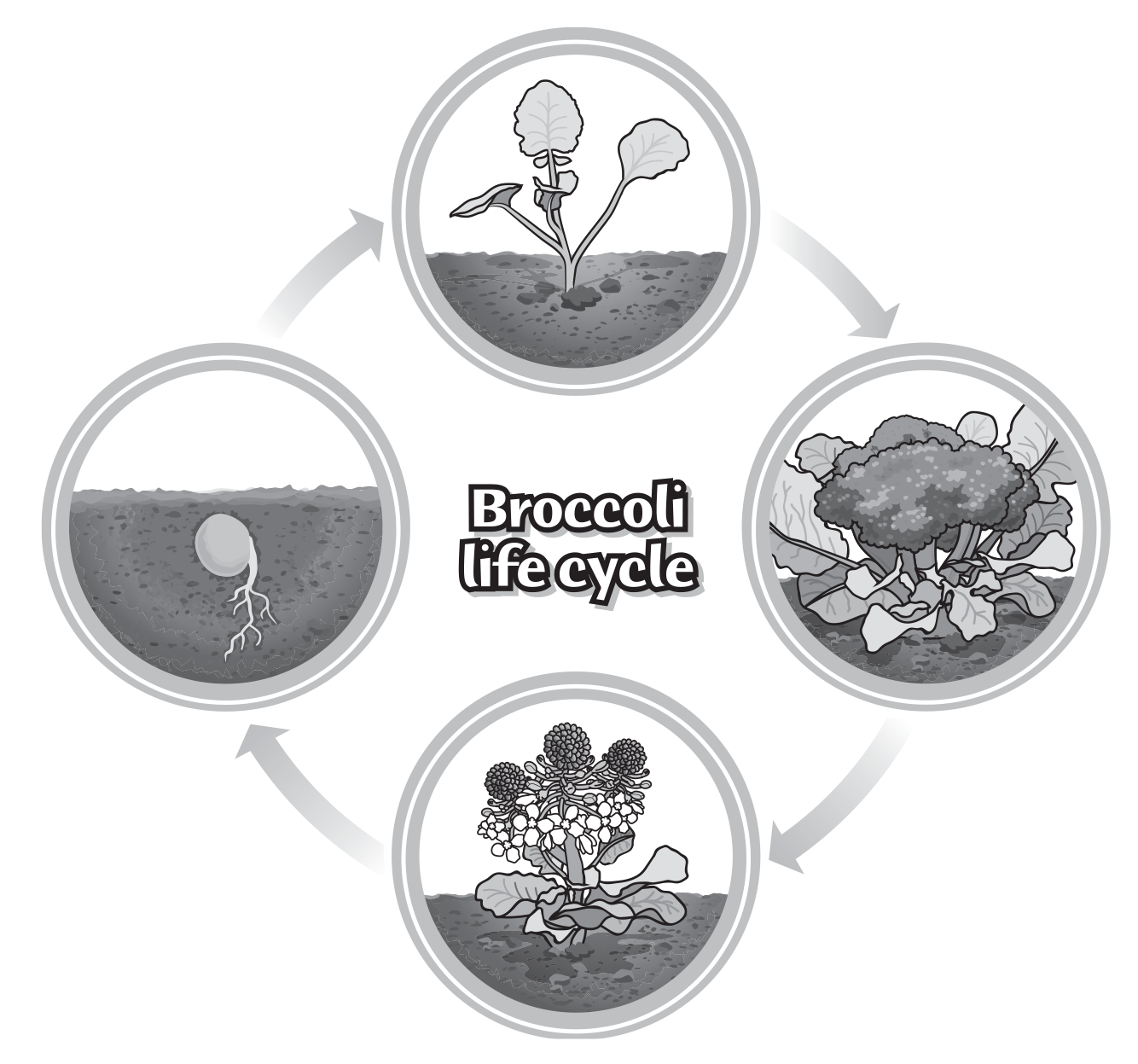 Relevancy and Engagement
washington.agclassroom.org
Relevancy and Engagement
washington.agclassroom.org
Fabulous Flowers
Grade Level
Purpose
The students examine the functions of flowers and determine that some flowers are edible. Grades K-2
Estimated Time
Materials Needed
- Broccoli
- Cauliflower
- Vase
- Vegetable Dip
- Cotton balls spray-painted yellow (pollen)
- Straws (bee proboscis)
- Flowers
Vocabulary
farm: an area of land used for growing crops or rearing animals
farmer: person who owns or manages a farm, cultivates land or crops, or raises animals
flower: the part of a plant that contains reproductive parts and attracts pollinators
fruit: the part of a plant that develops from the flower and contains the seeds of the plant
pollen: the fine, powder-like material produced by the anthers of flowering plants
Background Agricultural Connections
This lesson is part of a series called Edible Plant Parts. These lessons allow students and teachers to examine the six basic plant parts—roots, stems, leaves, flowers, fruits, and seeds—in a unique way. Through hands-on activities, students will learn about the different plant parts, as well as how to include fruits and vegetables into their daily meals as part of a healthy diet. Students will also learn about agriculture, farms and the farmers who produce our food. The remaining lessons can be found at the following links:

- Why People Need Plants
- Dig 'Em Up
- Snappy Stems
- Luscious Leaves
- Fabulous Flowers
- Freshest Fruits
- Supreme Seeds
- Edible Plant Game
- Eat 'Em Up
Flowers are the reproductive parts of plants. Some flowers have colorful petals and fragrances that attract pollinators such as bees, flies, butterflies, and moths. These insects transfer pollen from flower to flower. Most flowers produce seeds, which develop in the ovary of the fertilized flower. When planted in the proper environment, seeds grow into new plants and the ripened ovary becomes the fruit.
 Flowers of some plants are edible, including broccoli, cauliflower, and artichokes. Broccoli and cauliflower flowers are called “heads” and are usually eaten along with their stems, whereas artichokes, which are actually the buds of flowers, are eaten without the stems. Other flowers such as zucchini and orchid flowers, are considered a delicacy in some parts of the world.
Flowers of some plants are edible, including broccoli, cauliflower, and artichokes. Broccoli and cauliflower flowers are called “heads” and are usually eaten along with their stems, whereas artichokes, which are actually the buds of flowers, are eaten without the stems. Other flowers such as zucchini and orchid flowers, are considered a delicacy in some parts of the world.
Students should be warned that some flowers are poisonous and they should never eat anything they are unsure of, unless it is approved by a responsible adult.
Engage
- Ask your students to describe characteristics of flowers and make a list on the board.
- Ask the students to list places where they see flowers. Students will likely recall seeing flowers in gardens and flower beds around their home, neighborhood, or at the school.
- Ask the students if they have ever seen a flower on their dinner plate. Inform the students that they will be learning about flowers and how they are important to our food supply.
Explore and Explain
- After brainstorming characteristics of flowers for the Interest Approach — Engagement, review and discuss the reproductive functions of flowers with the class. Flowers attract pollinators, such as insects and birds, and makes seeds that will grow into new plants.
- Ask the students if they know what a pollinator is. Explain that pollinators are animals and insects that move pollen from the male part of flowers to the female part of flowers. Most plants require pollination to reproduce. Ask the students if they can think of any examples of pollinators.
- Play the "Bee Pollination Game" outside. Half the class will play the role of a bee and half will play the role of a flower. The “flowers” will each stand outside holding a flower (daisy, rose, or another flower that is available) and a yellow cotton ball for pollen. “Bees” will each have a half of a straw for their proboscis. Bees will also have a cotton ball, which represents pollen that stuck to them as they were visiting flowers. Explain that bees must fly around the garden looking for flowers so they can drink their nectar. Bees will go from flower to flower and pretend to drink nectar with their straw proboscis. At each flower, “bees” and “flowers” are to trade “pollen” (cotton balls). Explain that as bees are busy gathering flower nectar for food, the pollen accidentally gets stuck on their legs or fuzzy body and this is how they end up carrying pollen from one flower to another, thus pollinating the flowers so they can develop fruit and seeds. At the end of one round, have students switch roles so everyone gets a chance to be the flower and the bee.
- Arrange broccoli, artichokes, and cauliflower in a vase of water. Tell your students that you received a beautiful bouquet of flowers. Show them your bouquet. Discuss that broccoli, cauliflower, and artichokes are flowers that people eat.
- Draw the life cycle of broccoli on the board. Begin with the seed, which grows into a plant with leaves, then show the buds on the head of a broccoli flower, then the flowering broccoli plant, and then back to the seed. Show students the stage at which we pick the broccoli to eat, just before it flowers.
- Cut the broccoli and cauliflower into bite-sized pieces. Distribute them with vegetable dip and have the students taste the flowers.

Elaborate
- Have students make prints with an artichoke. Cut the artichoke in half lengthwise, dip the artichoke in paint, and then press it onto construction paper.
- Invite a flower farmer into your classroom. Have the farmer discuss the flower operation and bring several examples of flowers for display. Contact your local county Farm Bureau for possible guest speakers.
- Place the stem of a whole head of broccoli in a vase of water to see if the flowers will bloom.
- Have students research pollinators and invite a beekeeper into your classroom. Contact your local county Farm Bureau for possible guest speakers.
- Go to your local supermarket or nursery and obtain flowers that are no longer sellable. Have the students dissect the flowers and identify the parts.
Evaluate
After conducting this activity, review and summarize the following key points:
- Flowers are the reproductive parts of plants.
- Flowers attract pollinators such as bees and other insects.
- Flowers of certain plants are edible.
Acknowledgements
This lesson update was funded by a grant from the Network for a Healthy California.
Executive Director: Judy Culbertson
Illustrator: Erik Davison
Layout & Design: Nina Danner
Copy Editor: Leah Rosasco
Recommended Companion Resources
- Akeem Keeps Bees!: A Close-Up Look at the Honey Makers and Pollinators of Sankofa Farms
- Amazing Time-Lapse: Bees Hatch Before Your Eyes
- Bea's Bees
- Flower Garden
- Flower Talk: How Plants Use Color to Communicate
- Give Bees a Chance
- How Do Flowers Grow?
- Jr. Sprout – Gardening
- Mara Plants a Seed
- Meadowscaping Makes it Better Activity Guide
- Meadowscaping with Kids
- Origami Parts of a Flower
- Plants Feed Me
- Sunflower House
- The Bee Book
- The Fruits We Eat
- The Reason for a Flower
- The Thing About Bees: A Love Letter
- Up Close Experience: Bees
- Vegetable Garden
- What's Inside a Flower?